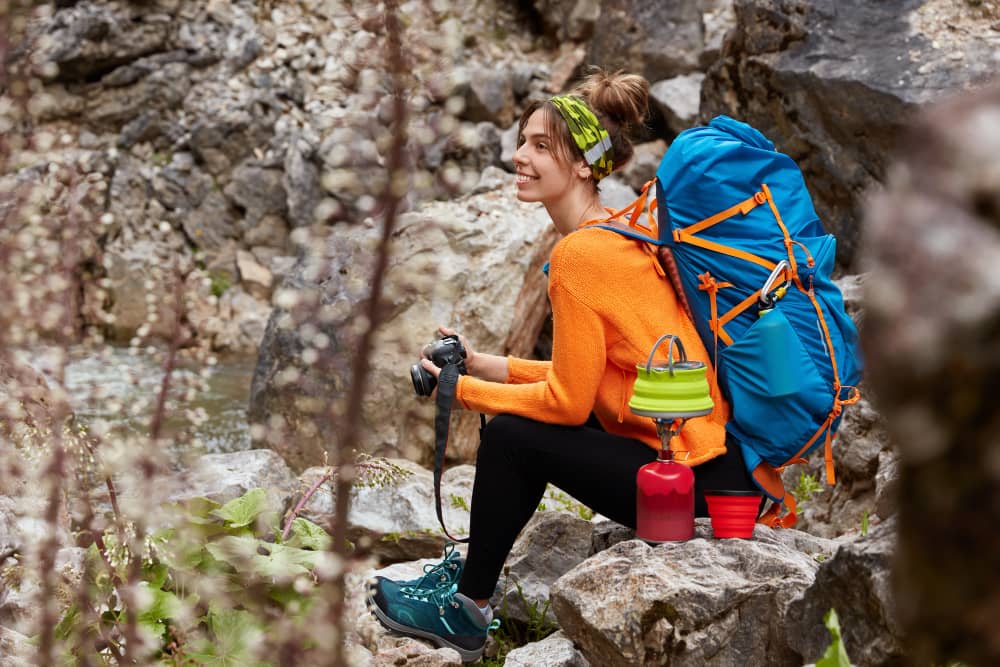

Hiking is an excellent way to explore nature, improve physical fitness, and reduce stress. But venturing into the great outdoors also means encountering unpredictable terrain and weather conditions. That’s why having the right hiking gear is crucial to keep you safe and comfortable on your journey.
In this guide, we’ll cover the benefits of various hiking equipment and how they can protect you during your adventures. With the right gear, from footwear and clothing to essential tools, you’ll be well-prepared for anything nature throws your way.
Let’s explore How Hiking Gears Protect You?
Table of Contents
The Benefits of Hiking Boots
Enhanced Traction
Having a good pair of hiking boots or shoes is crucial for any hike. They provide better traction on various terrains, helping you maintain your footing and preventing slips and falls. For example, the Vibram soles in many hiking boots are designed to grip wet, slippery, and uneven surfaces, making them ideal for challenging trails.
Ankle Support and Stability
High-quality hiking boots also offer ankle support, which can be crucial when carrying a heavy backpack or navigating uneven terrain. In a study by the University of Würzburg, researchers found that wearing high-cut boots significantly reduced the risk of ankle sprains compared to low-cut shoes. For example, the Lowa Renegade GTX offers excellent stability and support thanks to its high-cut design and sturdy construction.


Protection from Elements and Debris
The purpose of hiking boots is to shield your feet from different elements, like water, rocks, and sharp objects. Waterproof boots keep your feet dry in wet conditions, preventing blisters and keeping you comfortable. Waterproof and breathable materials like Gore-Tex help keep your feet dry while allowing moisture to escape, preventing blisters and discomfort.
Cushioning and Shock Absorption
Proper cushioning and shock absorption in hiking footwear help reduce fatigue and protect your joints from the impact of walking on hard or uneven surfaces.
"When you're out on the trail, your feet are your most valuable asset. A good pair of hiking boots is an investment in your safety and comfort."
- Cheryl Strayed, author of Wild
Backpacks: Carrying Your Essentials with Ease
A well-fitted hiking backpack is essential for distributing the weight of your gear evenly and comfortably. Features like padded shoulder straps, adjustable hip belts, and load lifters can prevent muscle strain and back pain. In a study by the University of Innsbruck, researchers found that properly adjusting a backpack’s load distribution can significantly reduce energy consumption during hiking.
Selecting the right backpack for your hike is essential for comfortably carrying your gear and staying organized. A well-fitting backpack can:
- Distribute weight: A properly adjusted backpack distributes the weight evenly across your shoulders and hips, reducing strain on your back and joints.
- Keep gear accessible: Backpacks with multiple compartments make organizing and accessing your gear easy, ensuring you have everything you need at your fingertips.
- Protect your belongings: A quality backpack with weather-resistant materials and zippers keeps your gear safe from the elements.
Layered Clothing: Adapting to Weather Conditions
Layered clothing is key for staying comfortable and protected during hikes, as weather conditions can change rapidly. Dressing in layers allows you to:
- Regulate body temperature: Wearing moisture-wicking base layers, insulating middle layers, and waterproof outer layers helps you stay warm, dry, and comfortable in varying conditions.
- Moisture management: Moisture-wicking materials, like merino wool or synthetic fabrics, help regulate body temperature by moving sweat away from your skin. It keeps you dry and comfortable, reducing the risk of chafing or hypothermia.
- Sun protection: Long-sleeved shirts, wide-brimmed hats, and sunglasses protect your skin and eyes from the sun’s harmful UV rays. UPF-rated clothing offers additional sun protection, with some garments blocking up to 98% of UV radiation.
- Layering for warmth: Layering clothing allows you to adjust your body temperature during a hike easily. Base layers, insulating mid-layers, and waterproof outer layers work together to keep you warm and dry.
Layering Clothing for Comfort and Weather Protection
Hiking clothing protects you from the elements and provides comfort during your hike. Opt for moisture-wicking fabrics, like merino wool or polyester, to keep you dry and comfortable. Layering is key, as it allows you to adapt to changing weather conditions easily. Some favorite choices among hikers include the Patagonia Nano Puff Jacket for insulation and the Columbia Silver Ridge Lite Shirt for sun protection.
The recommended clothing layers are mentioned below:
Base Layers: Moisture Management
When hiking, it’s important to wear moisture-wicking base layers made of materials like Merino wool, polyester, or nylon. These materials help keep you dry by pulling sweat away from your skin, preventing chafing, and keeping you comfortable. According to a study by the University of Otago, wearing moisture-wicking fabrics can also improve performance and recovery during physical activity.


Mid Layers: Insulation
Mid-layers, such as fleece jackets or down vests, are essential for insulation during cold hikes. They help to retain body heat by trapping warm air close to your skin. As the Outdoor Industry Association explains, insulation options like down, synthetic, and fleece provide varying degrees of warmth, weight, and compressibility, so choose the one that best suits your needs.
Outer Layers: Weather Protection
Your outer layer, such as a waterproof and breathable rain jacket, is crucial for protecting you from wind, rain, and snow. The American Hiking Society recommends using a jacket with features like pit zips, adjustable cuffs, and a hood to keep you dry and comfortable during your hikes.
"Dress in layers, even in warm weather. Layers allow you to add or remove clothing as needed to maintain a comfortable temperature."
- Peter Potterfield, author and hiking expert
Navigation Tools: Staying on Track and Finding Your Way
Reliable navigation tools are essential for staying on course and avoiding getting lost. These tools can include:
- Maps: Topographic maps show an area’s terrain and natural features, helping you plan your route and stay on track.
- Compasses: A compass helps you find your bearings and navigate through unfamiliar terrain.
- GPS devices: Handheld GPS devices or smartphone apps provide real-time location information and can store pre-loaded maps for offline use.
Carrying a GPS device, map, and compass ensures you can navigate safely during your hike. Getting lost in the wilderness can be dangerous, especially in extreme weather conditions or unfamiliar terrain. A GPS device combines GPS functionality with two-way satellite communication, allowing you to send messages and share your location with emergency responders if needed.
However, carrying a physical map and compass as a backup is always a good idea. The National Geographic Trails Illustrated Maps offer topographic details, trail information, and clearly marked landmarks, ensuring you can navigate safely without electronic devices.
"Not all those who wander are lost, but it helps to have the right navigation tools just in case."
- Adapted from J.R.R. Tolkien
First Aid Kits: Being Prepared for Emergencies
A well-stocked first aid kit is a must-have for any hiker. It should include items to treat:
- Cuts and scrapes: Band-aids, gauze, and antiseptic wipes help keep wounds clean and promote healing.
- Blisters: Moleskin and adhesive bandages protect blisters and prevent further irritation.
- Sprains and strains: Elastic bandages and instant cold packs can help immobilize and reduce swelling in injured areas.
- Insect bites and stings: Hydrocortisone cream and antihistamines can alleviate itching and swelling.
Remember to personalize your first aid kit based on your specific needs and any medical conditions you may have.
Hydration Systems: Staying Hydrated on the Trail


Proper hydration is essential for staying healthy and energized during your hike. When you don’t drink enough fluids, it can cause tiredness, dizziness, and even heatstroke, which is why staying hydrated is important. There are various options for carrying water, including:
- Water bottles: Lightweight, reusable water bottles are easy to carry and can be refilled at water sources along the trail.
- Hydration bladders: These reservoirs fit inside your backpack and have a hose for easy, hands-free drinking.
- Water filters and purifiers: These devices remove contaminants from natural water sources, ensuring safe drinking water.
Hydration systems, such as hydration reservoirs or water bottles, allow you to carry sufficient water while minimizing the space and weight in your backpack.
Trekking Poles: Enhancing Stability and Support
Trekking poles provide extra stability and support, reducing the impact on your joints and making your hike more enjoyable. This help reduces strain on your joints, improves stability on uneven terrain, and assists with balance during river crossings. They can:
- Improve balance: Poles help you maintain balance on uneven terrain, reducing the risk of falls.
- Reduce joint stress: By distributing your weight more evenly, trekking poles can help alleviate pressure on your knees, hips, and ankles.
- Increase efficiency: Trekking poles can help you maintain a steady pace and conserve energy on long hikes.
Protecting Your Skin: Sunscreen, Sunglasses, Hats
Protecting your skin from the sun’s harmful rays is essential to prevent sunburns, skin damage, and long-term health risks. The American Academy of Dermatology recommends using a broad-spectrum, water-resistant sunscreen with an SPF of 30 or higher. Additionally, wearing sunglasses with UV protection and a wide-brimmed hat can shield your eyes and face from the sun.
Exposure to the sun’s harmful UV rays can cause sunburn, heat exhaustion, and long-term skin damage. Wearing a wide-brimmed hat or a cap with a neck cape can provide effective sun protection for your face, ears, and neck.
Safety Helmets
Wearing a helmet can greatly decrease the chance of getting a head injury while hiking in areas where rockfall is possible or while doing more challenging activities like scrambling or mountaineering.
Additional Safety Gear for Peace of Mind on the Trail
Emergency Shelter: Protection from the Elements
An emergency shelter, such as a lightweight bivy sack or an emergency blanket, can provide lifesaving protection from the elements if you get caught in unexpected weather or need to spend the night outdoors. The SOL Emergency Bivvy is a popular option, offering lightweight, waterproof, and windproof protection in a compact package.
Headlamp: Light Your Way in the Dark
A reliable headlamp is essential for early-morning starts, late-night finishes, or emergency situations. The Black Diamond Spot Headlamp is a top choice for its high-lumen output, multiple lighting modes, and water-resistant design.


Personal locator beacon (PLB)
A PLB can be a lifesaver in an emergency, allowing you to send a distress signal with your location to rescue services. It’s particularly useful when hiking in remote areas with limited cell phone reception.
Bug Spray: Keep Pesky Insects at Bay
One of the most common nuisances encountered on the trail is the presence of insects. Not only can they be irritating, but they can also transmit diseases such as Lyme disease and West Nile virus. A quality bug spray containing active ingredients like DEET or picaridin can significantly reduce your chances of being bitten.
Bug Spray: Keep Pesky Insects at Bay
One of the most common nuisances encountered on the trail is the presence of insects. Not only can they be irritating, but they can also transmit diseases such as Lyme disease and West Nile virus. A quality bug spray containing active ingredients like DEET or picaridin can significantly reduce your chances of being bitten.
As Dr. Catherine Forest, a physician at Stanford University, says, “Using insect repellent can be the first line of defense against potential vector-borne diseases.”
A Knife: The Ultimate Multi-Purpose Tool
A good knife is an indispensable piece of hiking gear, serving various purposes, from cutting food to fashioning makeshift tools in a survival situation. In 2010, hiker Aron Ralston famously used a pocketknife to amputate his arm and free himself after being trapped by a boulder in a remote Utah canyon. While this is an extreme example, it demonstrates the importance of carrying a reliable knife on outdoor adventures.
Whistle: Alert Others in Case of Emergency
A whistle is a lightweight and effective signaling device that can help you attract attention in an emergency. When lost or injured, the loud sound of a whistle can travel much farther than your voice, making it easier for rescuers to locate you. The National Park Service recommends using the universal distress signal of three short blasts, followed by a pause and then repeating.
Fire Starter: Stay Warm and Signal for Help
Starting a fire is essential for warmth, cooking, and signaling for help during an emergency. A fire starter, such as a ferrocerium rod or a magnesium fire starter, can be a reliable and weatherproof option for igniting a flame. The U.S. Forest Service suggests that in a survival situation, building a fire can provide warmth and boost morale, making it a vital tool for hikers.
Signaling Device: Make Your Presence Known
In addition to a whistle, it’s essential to have another signaling device like a signal mirror or a brightly colored bandana. These can alert rescuers or other hikers to your location in case of an emergency. Signal mirrors can be particularly effective in sunny conditions, reflecting sunlight to create a highly visible flash.
Portable Shelter: Stay Protected from the Elements
A portable shelter, such as a lightweight tarp, bivy sack, or emergency blanket, can protect you from the elements and help maintain your body heat in case of an unexpected night out in the wilderness.
"Carrying some extra safety gear can provide invaluable peace of mind, allowing you to focus on enjoying the great outdoors."
- Heather Balogh Rochfort, author and outdoor blogger
Bonus: Knowledge and Skills for a Safe Hiking Experience
In addition to having the right gear, it’s important to equip yourself with the knowledge and skills necessary to handle unexpected situations on the trail. Take the time to familiarize yourself with basic first aid, navigation techniques, and wilderness survival skills. Moreover, always inform someone of your hiking plans and estimated return time.
By investing in the right hiking gear, you’ll not only ensure a more enjoyable experience on the trails, but you’ll also protect yourself from potential hazards and discomforts. So before you embark on your next adventure, ensure you’re well-equipped to stay safe and comfortable outdoors.
FAQs
-
How do hiking boots or shoes provide protection while hiking?
Hiking boots or shoes protect your feet by offering support, cushioning, and stability. They are designed with thick soles to guard against rough terrain, rocks, and roots. The grip and traction provided by these shoes help prevent slips and falls on various surfaces.
-
Why are moisture-wicking and insulating clothing layers essential for hiking?
Moisture-wicking and insulating clothing layers help regulate your body temperature, keeping you comfortable in various weather conditions. They wick away sweat, reducing chafing and the risk of hypothermia. Insulating layers also provide warmth in cold temperatures and protection against wind and rain.
-
How do trekking poles contribute to hiker safety?
Trekking poles offer stability, balance, and support during a hike. They help to reduce the impact on your knees and joints, especially when descending steep terrain. Additionally, they can prevent slips and falls by providing extra points of contact with the ground.
-
What role does sun protection play in safe hiking?
Sun protection is crucial for preventing sunburn, heatstroke, and eye damage. Wearing a hat, and sunglasses, and applying sunscreen with a high SPF helps to shield your skin and eyes from harmful UV rays, ensuring a safer and more comfortable hiking experience.
-
How does a well-fitting backpack contribute to a safer hike?
A well-fitting backpack evenly distributes weight across your back and shoulders, reducing strain and preventing injuries. It also enables you to carry essential supplies such as water, food, and a first-aid kit, which contribute to your safety and comfort during a hike.
-
Why is it important to carry a navigation tool while hiking?
Navigation tools like maps, compasses, or GPS devices help you stay on track and prevent you from getting lost. They allow you to avoid potential hazards and dangerous areas, ensuring a safer hiking experience.
-
What should be included in a first-aid kit for hiking?
A first-aid kit for hiking should contain supplies to treat minor injuries, blisters, insect bites, and allergic reactions. Items such as adhesive bandages, gauze, antiseptic wipes, tweezers, pain relievers, and any personal medications are essential for promoting safety during a hike.
-
How does a headlamp or flashlight contribute to hiking safety?
A headlamp or flashlight provides visibility during low-light conditions or nighttime hikes. It helps you avoid potential hazards, identify trail markers, and navigate safely, reducing the risk of accidents and injuries.
-
Why is an emergency whistle an essential hiking gear for safety?
An emergency whistle enables you to signal for help in case of an accident, injury, or any situation where you need assistance. Its loud sound can be heard from a distance, alerting other hikers or rescue teams to your location.
-
How does staying hydrated during a hike contribute to safety?
Staying hydrated is crucial to maintaining physical and mental performance during a hike. Dehydration can lead to fatigue, dizziness, and confusion, increasing the risk of accidents and injuries. Carrying enough water and drinking regularly throughout your hike helps to prevent dehydration and promotes a safer experience.

John Smith
John has been an avid hiker for over ten years and has explored some of the most challenging trails across the USA. He has completed multiple long-distance hikes, including the Appalachian and Pacific Crest Trails. John is also a certified hiking guide, leading several hiking trips for groups of all ages and skill levels.

John Smith
John has been an avid hiker for over ten years and has explored some of the most challenging trails across the USA. He has completed multiple long-distance hikes, including the Appalachian and Pacific Crest Trails. John is also a certified hiking guide, leading several hiking trips for groups of all ages and skill levels.
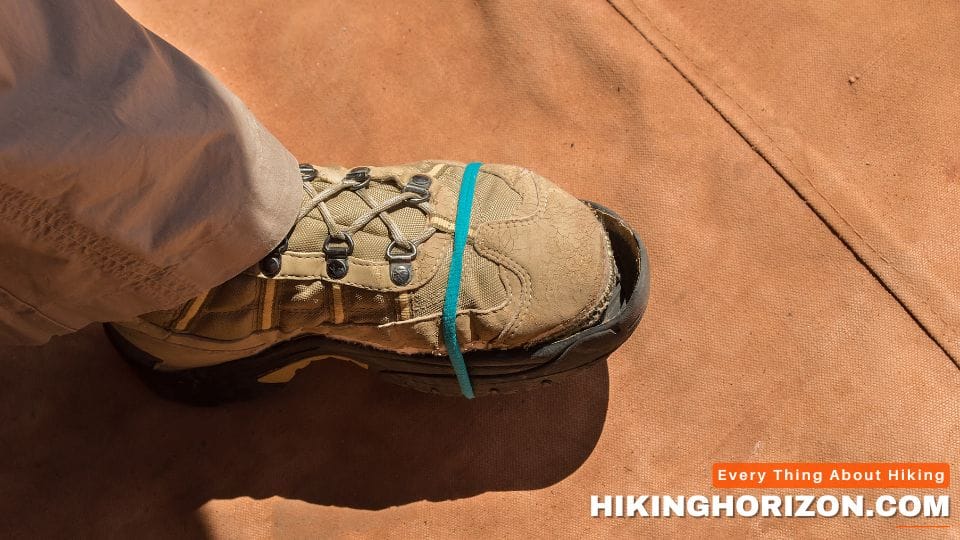
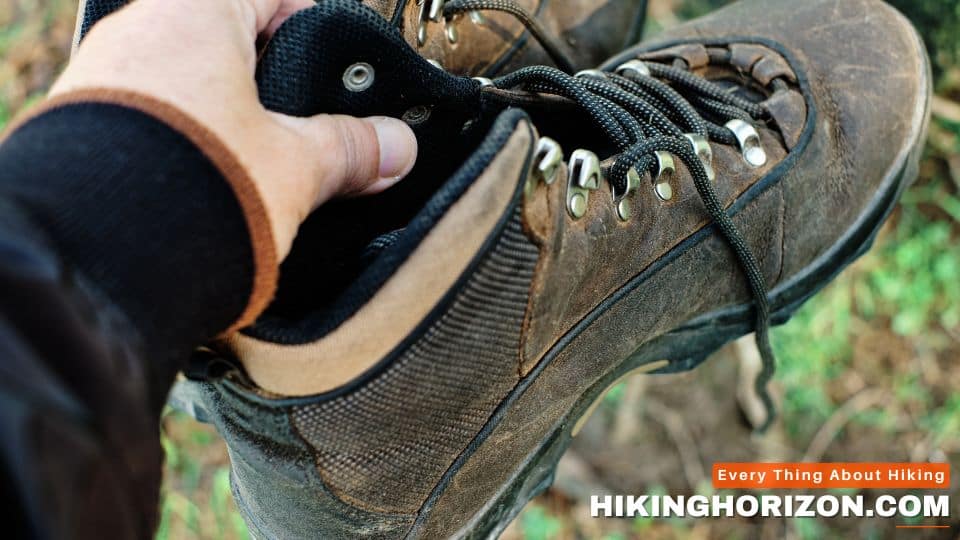
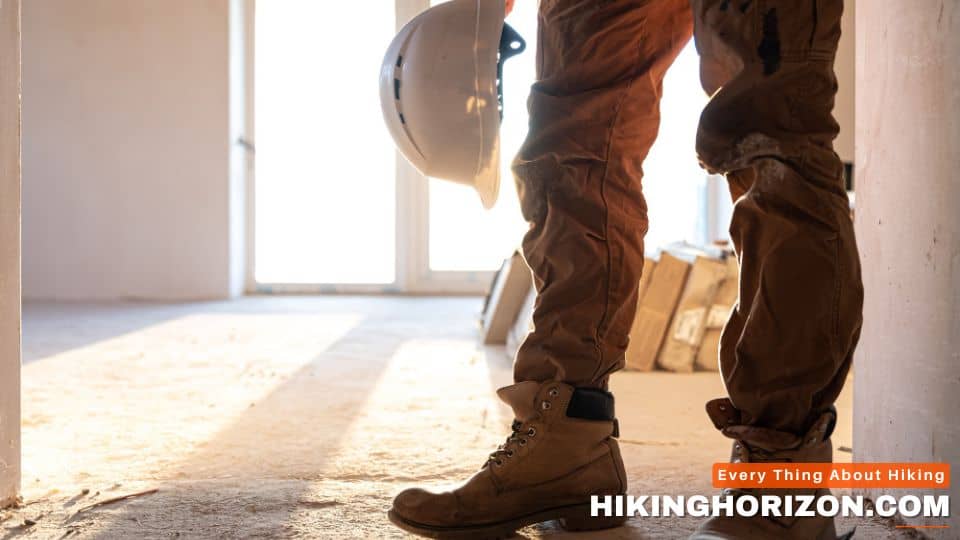
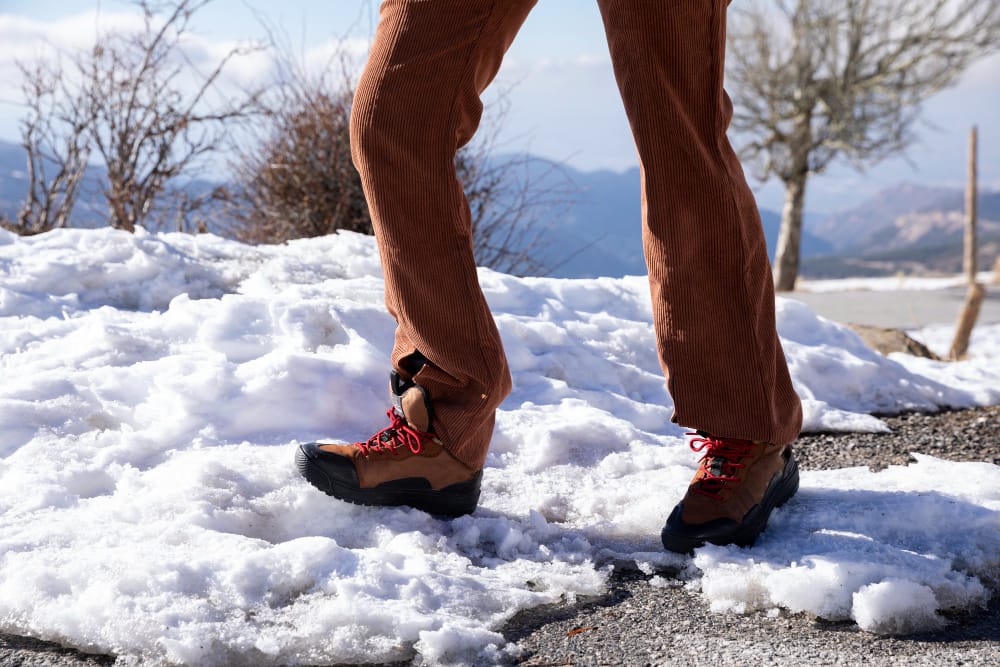
Pingback: Can Hiking Boots Be Resoled For Extraordinary Longevity? For Extraordinary Longevity?
Pingback: Should You Wear a Hat While Hiking? Exploring the Benefits and Protection
Pingback: How to Wear Hiking Pants? Unleash the Art of Styling!
Pingback: What is the recommended number of socks to bring on a hike?
Why is it recommended to carry a physical map and compass as a backup, even if using GPS devices?
It is recommended to carry a physical map and compass as a backup to GPS devices for the following reasons:
Having both traditional navigation tools and modern GPS provides redundancy. If one fails or is missing data, you have a backup option to help find your route. This improves safety and prevents getting stranded if GPS runs out of power or loses signal in remote terrain. The map and compass can get you back on track.
A great overview of how thoughtfully selecting and properly utilizing hiking gear can optimize safety and comfort on the trails. The specific examples of clothing, navigation tools, packs and more drove home the importance of preparation and precaution when adventuring into nature.